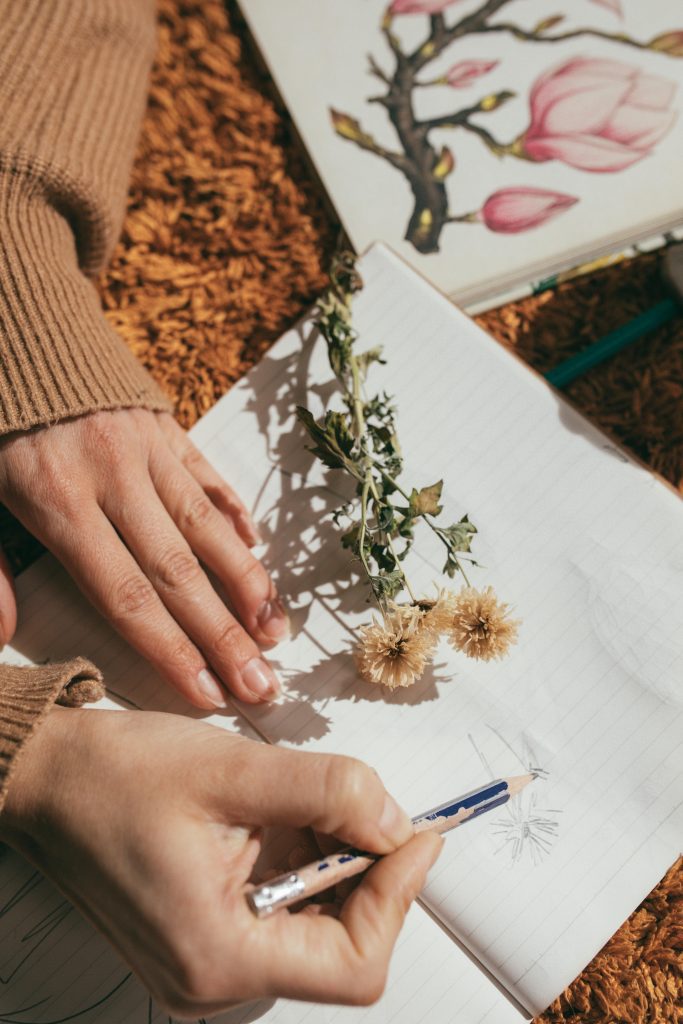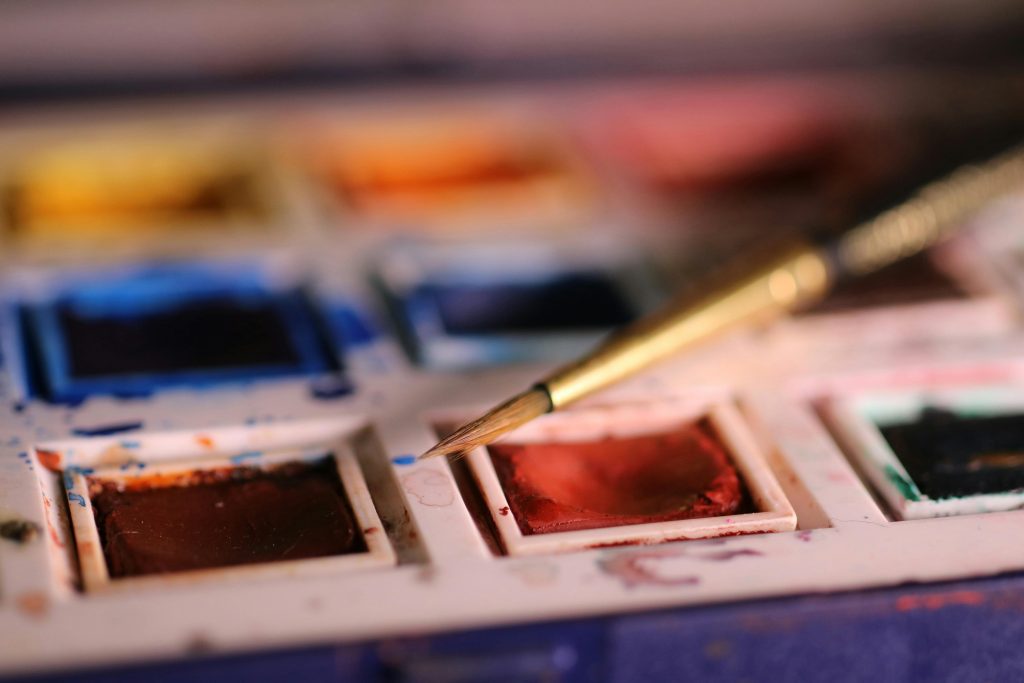How to Choose the Best Works for a Professional Art Portfolio

Start With a Clean Slate
If you’ve been an artist for any length of time, you probably have hundreds of works scattered across sketchbooks, folders, and hard drives. The temptation to cram everything you’ve ever made into your portfolio is real. But that urge can backfire quickly. Before you even begin selecting, take a deep breath and start with a clean slate. Literally. Open a new folder and only add pieces that you feel excited about today. Not yesterday. Not five years ago. Today.
Doing this helps you break away from nostalgia and sentimentality. It’s easy to hang on to pieces that mean something to you personally but might not resonate with others. Think of your portfolio as your elevator pitch in visual form. Every piece needs to earn its place by adding value. Set a limit. Maybe 10 pieces max for a gallery submission. Fewer for a grant. Let that limitation guide your choices.
By starting fresh, you also allow space for your current style and voice to lead the curation. Your portfolio should reflect the artist you are now, not just the one you were when you first started. It’s fine to include an older piece if it’s still relevant, but only if it still speaks clearly to who you are creatively. Be ruthless but kind in your selection. It’s okay to love a piece and still know it doesn’t belong in your portfolio.
A clean slate also clears mental space. Once you remove the pressure to showcase everything, you can begin to focus on what your strongest work actually is. That kind of clarity is liberating. It helps you see your growth and notice patterns in your work that are worth highlighting.
Define Your Purpose Before You Select
Not every portfolio is built for the same reason. Are you applying to an MFA program? Pitching a solo show? Trying to catch the eye of a new collector? Each goal demands a slightly different selection of works. Before you start dragging images into your portfolio folder, get crystal clear on what you’re building this collection for.
If you’re targeting galleries, they often want to see a focused body of work that shows cohesion and maturity. For art school applications, reviewers may be more interested in your experimentation and development process. Meanwhile, for online shop listings or public-facing websites, a broader mix might be more appropriate. One size definitely doesn’t fit all.
When you know the goal, it becomes easier to eliminate pieces that don’t serve it. You’re not just curating your best work; you’re curating your best work for that audience. Ask yourself: Will this piece support my story in this context? Does it strengthen my message or just take up space?
It’s also wise to keep separate versions of your portfolio for different uses. A collector-focused PDF can look very different from one tailored to a grant jury. You don’t need to reinvent the wheel every time, but small edits and swaps go a long way in making your presentation feel intentional.
Limit the Number, Elevate the Impact
More is not always better. In fact, more is often just overwhelming. Think of your portfolio like a well-edited film. Every scene (or artwork) needs to advance the narrative. If it doesn’t, cut it. Set a limit on how many works you’ll include, 10 to 15 is a solid range for most purposes. The fewer the pieces, the stronger each one must be.
This limitation forces you to be discerning. You’ll start to notice that some works, while technically proficient, don’t have the same impact or energy as others. That’s a good thing. It sharpens your instincts. It helps you begin to see your own hierarchy of quality. Not every piece needs to shout, but they should all pull their weight.
Additionally, a tighter selection allows each work to breathe. It gives the viewer space to sit with each piece, to absorb it, and to make connections. When everything is crowded, nothing stands out. When you select with care, even quieter works can shine.
Try this exercise: pick your top five strongest pieces. Then ask yourself, what makes them strong? Is it the technique? The emotional punch? The uniqueness? Use those traits as a filter for the rest. If a piece doesn’t meet at least two of those criteria, it might not belong in this version of your portfolio.

Tell a Story, Not Just Show a Skillset
One of the biggest mistakes artists make when building a portfolio is treating it like a resume. Yes, you want to showcase your abilities, but more than that, you want to share your story. The sequence of your pieces, the flow from one to the next, can either confuse or clarify who you are as an artist.
Think about rhythm. Think about contrast. If you start with a bold, maximalist painting, what follows it? Is it a whisper of a charcoal sketch? A continuation of the same series? Is there a visual arc? A color progression? A thematic throughline? Your portfolio should read like a carefully composed exhibition.
You can even group your pieces into mini-series or collections within the portfolio. Add short, thoughtful titles or captions that guide the viewer without overexplaining. This not only adds professionalism but also allows the narrative of your work to surface naturally. People love stories. Even in visuals, our brains seek patterns, progressions, and purpose.
Think of your portfolio as a visual diary. What chapter are you in now? What’s the connective thread that weaves through these works? If someone only looked at your portfolio and nothing else, would they walk away with a sense of who you are? If not, your story may need more clarity.
Curate for Flow, Not Just Favorites
Just because a piece is your favorite doesn’t mean it fits. Curating a great portfolio means sacrificing some personal biases in favor of creating a cohesive, flowing experience. Think of it like making a playlist. Each song (or piece) should work not just on its own, but also in context with what comes before and after.
Start by printing thumbnails or laying out your works digitally. Look at them as a whole. What stands out? What feels jarring? Are there tonal or stylistic shifts that feel too abrupt? Try rearranging them in different orders and note how the energy of the sequence changes. Sometimes simply moving a piece earlier or later makes it feel more harmonious.
Also, be aware of redundancy. If you have three pieces that are very similar in composition, technique, or palette, pick the strongest one. Repetition can feel lazy unless it’s intentional. Remember, flow is about pacing, contrast, and clarity. It doesn’t have to be perfectly chronological or uniform, but it should feel intentional.
When done right, the order of your pieces will pull the viewer through your portfolio like a visual journey. Let the highs and lows balance each other. Let quieter moments give breathing room to the bold ones. This curatorial mindset is what elevates a collection of works into a powerful artistic statement.
Advocate for Yourself with Subtle Context
Sometimes a piece needs a little context to shine. Not an essay, but a sentence or two. Title, medium, year, and a very brief insight into the piece’s intention or backstory can do wonders. This is especially helpful when your work leans abstract or conceptual, or when it’s part of a larger series.
Don’t underestimate how these little bits of framing can change the viewer’s experience. A painting might seem purely aesthetic until you add that it was created during a specific residency or in response to a personal event. Suddenly, the emotional depth becomes apparent. But the key is subtlety. Let the work speak first. Let the words support it quietly.
If you’re using a platform like the Women in Arts Network to host your portfolio, it’s incredibly easy to add just enough context. The interface allows you to upload images, reorder them, and add text with zero technical fuss. It’s designed with artists in mind, not coders.
In fact, building your portfolio on the Women in Arts Network site is one of the simplest and smartest ways to present yourself professionally. It’s free, easy, and made for artists to thrive. The platform lets you update your work, and connect with curators who are actively looking for new voices. You don’t have to build a website from scratch to be taken seriously. This platform does the heavy lifting for you.
Use Tools That Make Curation Simple
Curating your portfolio doesn’t have to be a chaotic mess of PDFs and Google Drive folders. There are tools, many free or low-cost, that streamline the process. Tools like Canva, Adobe Portfolio, or even the Arts to Hearts Portfolio Builder can help you visually lay out your portfolio, experiment with order, and quickly produce clean, sharable documents.
The Arts to Hearts Portfolio Builder in particular is worth checking out if you want a customizable, creative, and intuitive way to plan your selections. It helps you build, track, and polish your portfolio visually, not just organizationally. You can even use the template to map your artworks by theme, series, or submission goal.
A bonus of using visual tools is that they reveal gaps in your narrative. You might notice you have too many similar works, or that one piece doesn’t quite fit. This reflection makes the final version stronger. You can make tweaks in real time, test alternate versions, and export your final layout in multiple formats.
Curation becomes less of a chore and more of a creative process when you have tools that feel designed for artists. And the best part? Most of these tools let you make multiple versions of your portfolio so you’re always ready for the next opportunity without starting from scratch.
Keep a “Maybe” Folder for Future Gems
Let’s be honest, not choosing certain pieces doesn’t mean they’re bad. They might just not be right for this version of your portfolio. That’s where a “maybe” folder comes in handy. As you curate, keep a side folder of works you love but can’t include right now. It makes the editing process feel less harsh and more strategic.
This also gives you a place to draw from for future updates. Maybe that bold ink drawing doesn’t belong in your current series-focused portfolio, but when you go for a residency that values experimentation, it might be perfect. Having a “maybe” bank allows you to stay flexible.
Over time, you’ll see that some “maybes” stay relevant while others quietly fade. This insight alone is valuable. It shows you how your own perception of your work evolves.
Update Regularly, Even When You’re Not Applying
Your portfolio is not a static thing. It should grow with you, shift as your practice evolves, and reflect your current voice. Don’t wait for an opportunity to scramble together an updated portfolio. Make it a habit to review and refine your collection every few months.
Treat this like studio maintenance. Set a quarterly date to look over your selected works. Ask yourself: is there something new that’s stronger? Has your direction changed? Does this portfolio still speak for you the way you want it to?
Updating regularly also reduces stress when deadlines appear. You’ll never be in that last-minute panic of trying to find high-res images or write statements from scratch. Instead, you’ll be ready, confident, and in control.
And if you’re using platforms like Women in Arts Network or the Arts to Hearts tools, those updates are as simple as a few clicks.

Curate With Intention and Pride
Creating a portfolio isn’t just about impressing others, it’s about discovering and honoring your creative voice. When you select fewer, stronger works with purpose, your entire practice becomes more focused. You start to recognize patterns in your own making, clarify your themes, and feel more confident in your identity.
Remember, your portfolio doesn’t need to be perfect. It needs to be honest and coherent. Let it reflect the richness of your journey while pointing toward where you’re headed next. Let it tell a story that’s more than just pretty pictures.
